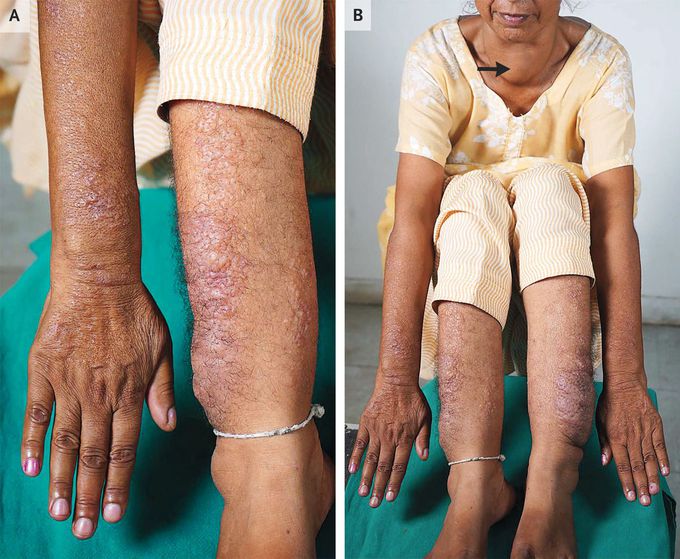


Thyroid Dermopathy in Graves’ Disease
A 49-year-old woman with a history of Graves’ disease presented to the endocrinology clinic with a 3-year history of skin changes on her arms and legs and a 1-year history of thyrotoxicosis symptoms. She had intermittently adhered to carbimazole therapy since her diagnosis 10 years earlier. On physical examination, violaceous, nonpitting, indurated nodules were observed on the dorsa of her hands, distal forearms, and shins (Panel A). A goiter (Panel B, arrow), proptosis, and lid lag were also noted. Laboratory testing showed an undetectable thyrotropin level and elevated total and free thyroxine and triiodothyronine levels. Testing for thyrotropin receptor and anti–thyroid peroxidase antibodies was positive. A skin biopsy of the pretibial region revealed nodular deposition of mucin with elastotic degeneration. A diagnosis of thyroid dermopathy in Graves’ disease was made. Thyroid dermopathy results from the accumulation of glycosaminoglycans in the dermis. Although the pretibial area is the most frequently involved site, thyroid dermopathy may occur on the feet, arms, and upper back. A biopsy is not typically needed for diagnosis. A total thyroidectomy was performed, after which levothyroxine therapy was given. Topical and intralesional glucocorticoid treatment was administered for the skin lesions. Ten months later, the patient’s symptoms had abated.

